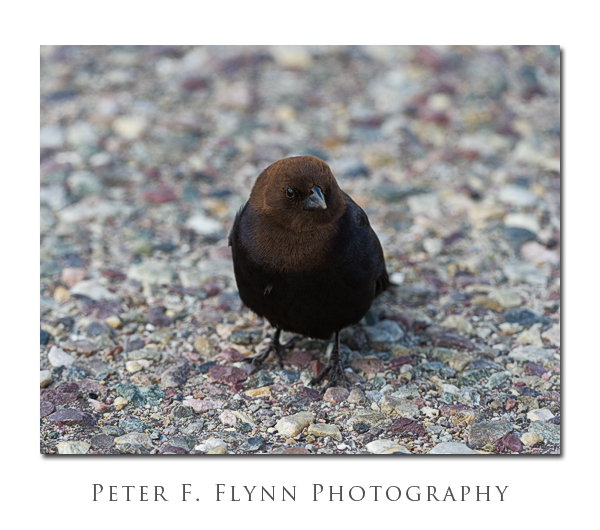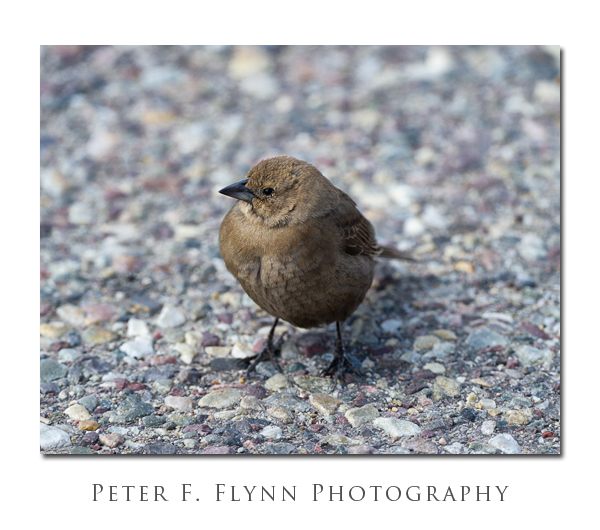Brown-Headed Cowbirds propagate by a most remarkable mechanism. These birds practice brood parasitism, e.g., female Cowbirds lay their eggs in the nests of other birds. Brood parasitism within a particular species is apparently common, e.g., a female bird which has lost its nest may lay its egg in the nest of the same species (Sibley). In the more extreme example of brood parasitism, of which the Cowbird is an accepted style-type, birds of a parasitic species never build their own nest, but exclusively place their eggs in the nests of other birds.
Cowbirds derive their name from their tendency to follow herds of Bison or cattle. A significant portion of the bird diet is based on the insects that are flushed into the air by herds of grazing Bison or cattle – such herds are constantly moving in search of fresh grasses. Thus brood parasitism in this species is believed to be the solution to the problem of being constantly on the move, and the consequent inability to maintain (their own) stable nests.
We found these birds in the Willow Flats Overlook parking area, Grand Teton National Park. Images of the male (upper) and female (lower) Brown-Headed Cowbirds were recorded at 16:00 MDT on June 4, 2011, using the Nikon D3s and the AF-S VR Zoom-NIKKOR 200-400mm f/4G IF-ED at 400mm. Exposures were at f/7.1 and 1/500s, ISO 1250. Image processing was accomplished using Photoshop CS5 with Nik and PhotoKit Sharpener plugins.
Special thanks to Dr. Jack Skalicky for his identification of these Cowbirds and an introduction to their biology.
Additional information can be found in the excellent text entitled ‘The Sibley Guide to Bird Behavior’, D.A. Sibley (2001) and at the Smithsonian National Zoological Park website.
Copyright 2011 Peter F. Flynn. No usage permitted without prior written consent. All rights reserved.
Tags: Brown-Headed Cowbirds, Grand Teton National Park, Molothrus ater, Willow Flats Overlook

